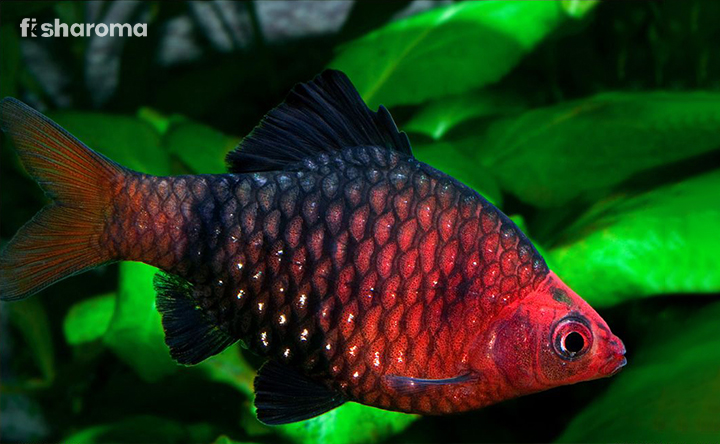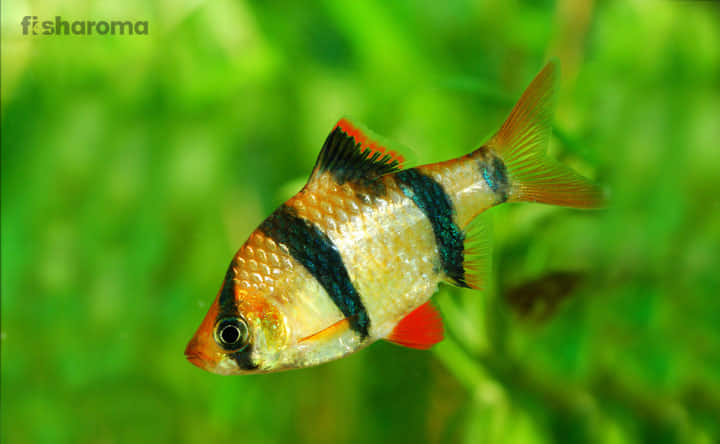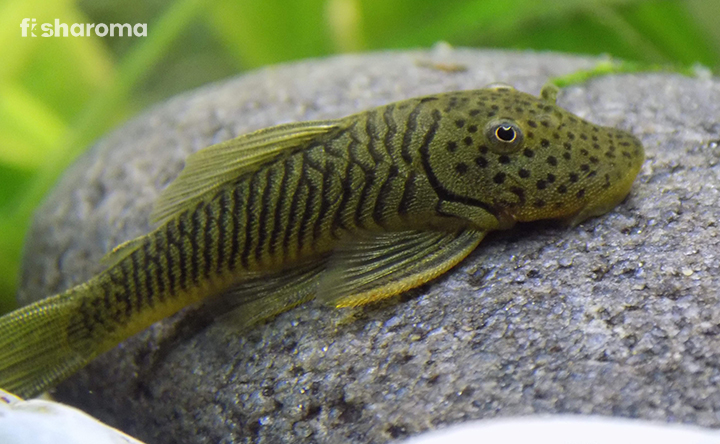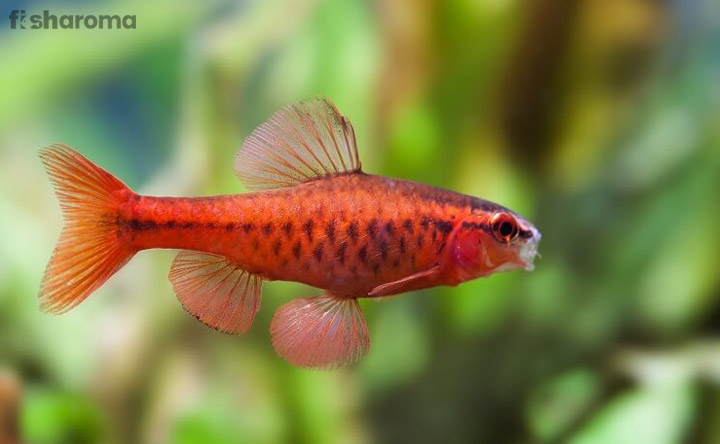Peacock Cichlid: Care Guide, Specifications, Diet and Breeding

- Origin and Habitat of Peacock Cichlid
- Appearance of the Peacock Cichlid
- Behaviour of Peacock Cichlid
- Lifespan of Peacock Cichlid
- Diet of Peacock Cichlid
- Tank Requirements of Peacock Cichlid
- Water Type for Peacock Cichlid
- Compatibility of Peacock Cichlid
- Breeding of Peacock Cichlid
- Disease and Treatment for Peacock Cichlid
- Summary
Peacock Cichlid is one of the freshwater fishes that are highly in demand among all aquarists across the globe. It draws the attention of fish-keepers through their low maintenance cost, majestic beauty and mellow nature. These fishes, with their charismatic colours, are the friendliest and most peaceful among all freshwater aquarium fishes. If you think of keeping these beauties in your aquarium, you must follow our all-inclusive care guide for Peacock Cichlids. Let us get started.
Key Specifications of Peacock Cichlid
These majestically beautiful fishes maintain a good relationship with the other community fishes also. We will provide information regarding their care, tank requirements, breeding and feeding, but before that, let us study their key features.
| Scientific Name | Cichla ocellaris |
| Origin | Lake Malawi, East Africa |
| Lifespan | 8 years |
| Colours | Different mainly blue |
| Temperament | Semi-aggressive |
| Size | 4-6 inches |
| Diet | Omnivore |
| Family | Cichlidae |
| Compatibility | Mixed nature |
| Tank Size | 55 gallons |
| Care Level | Easy to low |
Overview
Being extremely friendly and peaceful in nature, the Peacock Cichlids comprise the entire Aulonocara genus of freshwater fish. There are 22 species of Peacock Cichlids, among which, only 7-8 species can be kept together within your aquarium. They are African Butterfly Peacock, Maulana Bicolor Peacock, Aulonocara Blue Gold Cochligs and Aulonocara Fort Maguire Peacock and a few others. Combining their beauty with their docile nature and low maintenance cost, you cannot resist keeping them in your tank.
Origin and Habitat of Peacock Cichlid
Peacock Cichlids are native to Lake Malawi in East Africa, and amazingly, you will find all the species in this lake. They have an impressive nature of living in the community and get themselves adjusted to any condition.
These fishes like to live in alkaline water and so they prefer living in Lake Malawi as it contains a high amount of alkali, which further provides clarity to the water. The areas where they live is surrounded by sand and rocky areas.
They are skilled swimmers and hence you must put enough water in their tank. Peacock Cichlids prefer warm deep water so that they can search for their food potentially in sandy substrates. Since they like vegetation, you must keep a satisfying amount of plants in the aquarium. Above all, matching the environment of the tank with their natural habitat will reduce their stress and they can live happily.
Appearance of the Peacock Cichlid
Peacock Cichlids come in varied colours, among which most prominent are orange, blue, gold and yellow. They do not have a bright colour, rather brightly shines in iridescent colours. Other Cichlids change colour according to their mood and breeding system, but Peacock Cichlids have permanent colours.
With their torpedo-shaped long body and elongated rays, they look very prominent. Peacock Cichlids have dorsal fins along with a round-edged and fan-shaped tail.
Size of Peacock Cichlid
Do not determine the beauty of these fishes with their size. They are only 4-6 inches but uphold a majestic charisma. But yes, you must minutely notice that they grow up to 6 inches and if not, concentrate on their nutrition properly.
Colour of the Peacock Cichlid
These fishes come in magnificent colours mainly staring blue, orange, pale pink, light golden and green. The baby and females are drab grey but if you want to add colours to your mundane life, keep the males in your aquarium.
Behaviour of Peacock Cichlid
Peacock Cichlids can easily get themselves accustomed to any aquarium condition. They are very friendly in nature but get semi-aggressive when constantly disturbed. The male Peacocks generally become a bit territorial but with enough water and a hiding place, they can remain calmly with other species.
Since they live from 6 to 40 meters depth in their natural habitat, in aquariums also, they prefer to eat food in deep water. Generally, they hover above the sand and with a minor movement from any invertebrate, they will strike. You will also find this behaviour in aquariums as they slide through substrates. Do not panic, thinking their striking movement is for illness.
They are very active swimmers and you must keep them in plenty of water so that they can move uninterruptedly.
Lifespan of Peacock Cichlid
The average lifespan of Peacock Cichlids is 8 years and this is possible only under proper diet, atmosphere and care. They need proper water parameters to maintain a healthy lifestyle.
These fishes are clear water fish and cannot survive in any clumsy environment. Always keep their tank clean and with a high amount of alkali in it.
Diet of Peacock Cichlid
The dietary requirements of Peacock Cichlids are very simple. Since they are omnivorous, they feed on both meat and vegetables. In the wild, they look for invertebrates within sand substrates. This can be typically insects, larvae or any other crustacean, even, they often feed on zooplankton. You must create this environment within the aquarium by keeping baby shrimps in the tank.
They generally reside on:
- Brine Shrimps (live or frozen)
- Ghost Shrimps (live or frozen)
- Daphnia Frozen
- Water Fleas
You must include quality Cichlid pellets in their diet and then supplement them with meat and plants. However, avoid any mammal meat as this is high in protein, as a result of which, the fish can grow Malawi Bloat. This is a dropsy kind of disease where the fish grow like a pine-cone and this occurs owing to high protein. You need to keep only 35% protein in their diet and never feed them with blood-worm or tubifex.
Apart from the points stated above, you must feed them periodically throughout the day instead of one-time large feeding. This will help them to maintain water levels equivalently.
Tank Requirements of Peacock Cichlid
Since these fishes need moderate to low care and maintenance, you can keep them in any environment. But you must be sure Peacock cichlids get the natural habitat they are used to in Lake Malawi. In order to set this Cichlid tank, you must follow the tank requirements that we are providing.
Tank Size
You must keep these Peacocks in batches because they are super active and playful. The tank size to keep a community of Peacock Cichlids must be 55 gallons at least. As they are fast swimmers, large water tanks will help them to swim and will make them jovial.
Tank Lid
They are active, playful and fast swimmers, as we have stated above. You must keep the tank lid sturdy, so that they do not jump out of the tank at play and hurt themselves. Moreover, tank lids keep the tank water clean and safe from dirt and dust.
Also make sure there is at least 4 inches gap from the water level to the tank lid, because while jumping, the fish might get hurt. Keep precautions, before anything happens.
Substrate
Since they are very colourful, you can use dark-coloured substrates in the tank as this will highlight their colours. Coming to materials, you must use sand as they find it happy to catch shrimps in sand substrates, but you must notice there is no sharp edge object or colouring in the substrate. This might hurt their fins and create an infection in their skin.
Recommended, that you use standard aquarium sand and gravel.
Filter
This is the most challenging part of keeping Peacock Cichlids in your aquarium. You can never use the aquarium without a filter because these fishes prefer alkaline water and filters keep the water clean and clear.
You must keep the filter strong so that there is high, lengthwise directional movement in the water. Peacock Cichlids like current in the water so that things get stirred up, as, this keeps them calm and they enjoy it.
Ornaments
It is stated above in the article, that, Peacock Cichlids like wild lake-like environments and prefer vegetation in their vicinity. Moreover, as they thrive on plants apart from meat, you must keep zooplankton to give them the natural feeling of diet and habitat. Try to create rock caves and shades of drift-woods so that they can hide whenever they feel shy and stressed.
But in order to provide ample vegetation to them, do not give artificial, plastic or colouring plants. Since these Peacocks also eat plants, if they bite on plastic vegetation, they can form an infection.
Lighting
Despite dwelling in deep water, these fishes like bright colours and lights. They feel very comfortable if their aquarium is decorated with blue lights. Lights also help in keeping them fit, mentally and physically and enhance plant growth in aquarium.
Presence of Flora
Peacock cichlids like thick vegetation in their tanks, as, sliding under plants to catch prey is their favourite activity. If you want to keep the plants for Peacock Cichlids to eat as well for decoration, you need to keep Duckweed, Anacharis, Hornwort, Java Moss and Java Fern. However, to decorate the lid of the tank you can use fake plants, but make sure that does not come in contact with the dwellers.
Cleaning Method
You must use a soft cloth, dipped in lukewarm water to clean the walls of the tank. Do not use any soap or chemicals for this purpose as they might leave residue in the tank, which can harm the fish.
Use a soft brush to remove dirt from the ornaments and substrates and keep the tank under running water. To clean the plants, sprinkle water through the little pipe as this will remove the moss from plants.
Water Type for Peacock Cichlid
Pick the right water type for these fishes as they need particular variations in water.
Temperature
Keep the water temperature relatively between 20-25 Degrees Celsius so that the fish can feel the warmth of the water.
pH Level
In order to keep the fish healthy, the pH level of their tank must be 7.5-8.5.
Hardness
The quality and hardness of water are very important for any fish. You must maintain the carbonate hardness of water from 4 to 6 dKH.
Minerals
There should be ammonia or nitrate in the water because they prefer alkaline water. However, the condition of the water must be very clear.
Replacement Procedure
Do not change the water as a whole because sudden alteration in water is not acceptable by these fish. You must remove 10% of the water once a week and then remove 40%-50% on fortnight.
Choose either of these two processes, but, whenever you change the water, adjust the temperature like before.
Compatibility of Peacock Cichlid
The compatibility of these fishes is very high as they can live with different species or with the same species in a community.
We have said above, that, these fishes like to dwell in deep water and prey from there. So remember, if you keep any other species, they must be upper water-body dwellers. This will not create any interference in the way of Peacocks.
Suitable Tankmates
Any kind of non-aggressive fish can be a favourable tank mate for these Peacock Cichlids. But you need to remember that if you put the same species in the community, then put two females for every male.
Keep the gentle Haps with the Peacock Cichlids:
- Copadichromis
- Placidochromis
- Nyassachromis
- Sciaenochromis
- Red tail shark
- Rainbow shark
Unsuitable Tankmates
They are not very comfortable with Petrotilapia, Labeotropheus, Pseudotropheus and Mbuna. This happens because these fishes try to interfere with their way and in that situation, male Peacock Cichlids become territorial.
Breeding of Peacock Cichlid
Since the males are a bit territorial, you must make them comfortable in their own space. They must not feel any conflict or disturbance in their arena. The best thing about the Peacock Cichlids is, they are comfortable in a home environment and can breed easily. Raise the water temperature so that they can feel comfortable in the warmth of their residence and can spawn easily.
The whole process is very entertaining to watch. In order to attract the females, the males perform various activities in their cave. They make quick movements and dart to grab the attention of females. Once the females understand the intention, they enter the cave, mate there in hidden condition and lay the eggs comfortably.
It is the duty of the males to fertilize eggs and since Peacocks are mouthbrooders, they carry the eggs in mouths. The female will then incubate the eggs in their mouth for 28 days. There are generally 10-50 babies and once they are hatched, the females leave the babies to their own device.
Disease and Treatment for Peacock Cichlid
Peacock Cichlids might suffer from diseases like Ich, velvet, fin rot, dropsy and body slime. They are generally quite healthy fishes, however, their susceptibility to diseases might be owing to poor water quality and fighting.
In order to avoid these diseases in your pet, you can eliminate formulas that involve salt in water. Use any kind of antibiotics for freshwater along with medicated pellets that help to treat internal parasites. Feeding immediately works like a miracle.
Summary
If you want to add some activity and brightness to your monotonous life, you can surely pet these Peacock Cichlids. These are the easiest and peaceful-to-keep fish. They have a charismatic colouration that entertains the viewer. These fishes are ideal for even new fish-keepers.
However, if you want a stable tank then these species cannot be a good match for your tank.
On a concluding note, if you see, lack of appetite or any abdominal inflammation then do not waste time. Consult your veterinarian and you can save your pet.
Care guide for similar freshwater fish:
If this article interests you, then do visit our sites for further care guides of different fish.
- Care guide for Chili Rasbora: These peaceful fish can add beauty to your tank. Read more to know ways for caring them.
- Care Guide for Hatchetfish: The unique-looking triangular belly shaped fish will surely grab your attention. Know more in the link given.
- Inclusive Care Guide of Zebra Pleco: Looks like zebra and nature-like fish! Know more about this fish.









